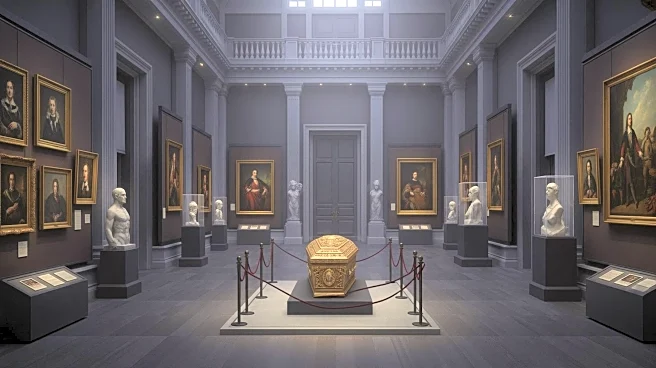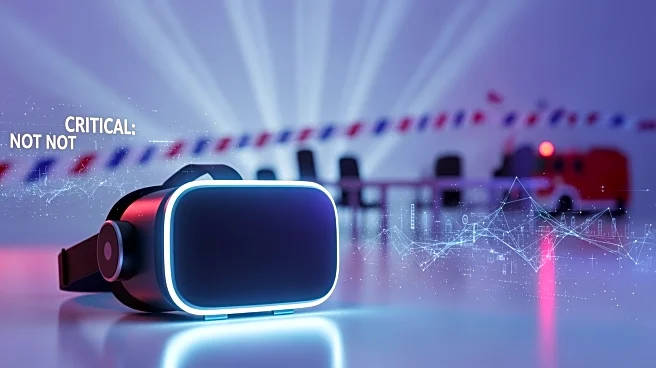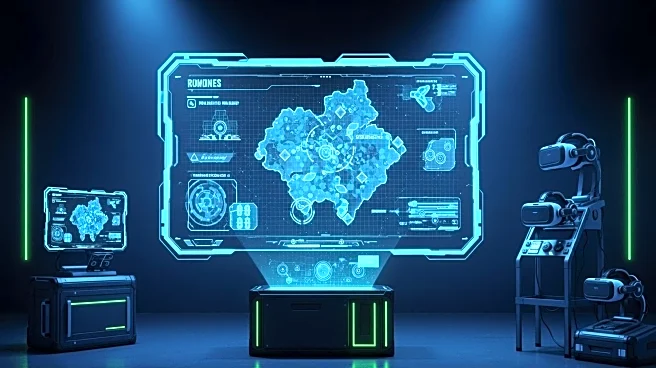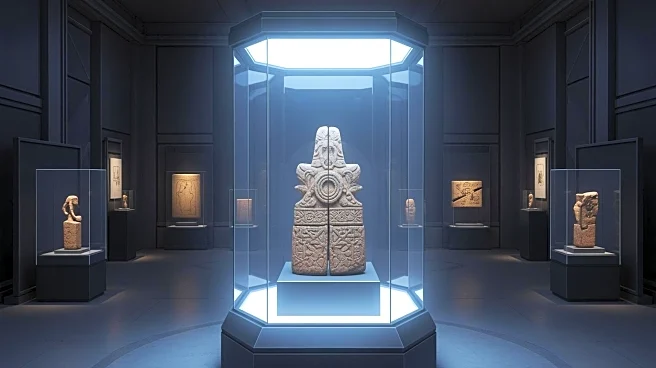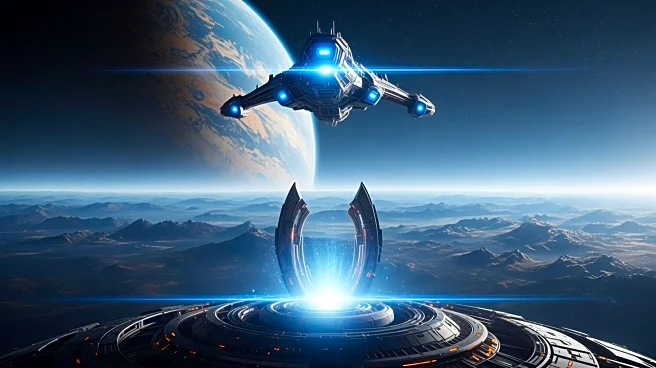What's Happening?
Two Point Museum, a popular simulation game, has announced a unique crossover with Vampire Survivors, a roguelike title. This collaboration introduces new elements from Vampire Survivors into Two Point Museum, including the character Poe Ratcho and themed
items such as garlic displays. Players can also explore three new locations from Vampire Survivors: Mad Forest, Inlaid Library, and Capella Magna. The crossover is part of a free update available to players on various platforms, including PC, PlayStation 5, and Xbox Series X|S. This follows a previous collaboration with the game Dredge in August. Two Point Museum is set to launch on Switch 2 on October 28.
Why It's Important?
The collaboration between Two Point Museum and Vampire Survivors highlights the growing trend of crossovers in the gaming industry, which can enhance player engagement and expand the audience for both games. By integrating elements from Vampire Survivors, Two Point Museum can attract fans of the roguelike genre, potentially increasing its player base. Such crossovers also offer players new content and experiences, keeping the games fresh and relevant. This strategy can be beneficial for developers looking to maintain interest in their games and drive sales across different platforms.
What's Next?
With the launch of Two Point Museum on Switch 2 scheduled for October 28, players can expect more updates and potential collaborations in the future. The gaming community may see further integration of popular game elements across different genres, as developers continue to explore innovative ways to engage players. Additionally, Vampire Survivors is set to introduce online co-op for up to four players, which could lead to more collaborative opportunities and expansions in the future.
Beyond the Headlines
The crossover between Two Point Museum and Vampire Survivors may influence other game developers to pursue similar partnerships, fostering a culture of collaboration within the industry. This could lead to more diverse gaming experiences and encourage creativity among developers. Furthermore, such collaborations can blur the lines between different gaming genres, offering players unique and unexpected gameplay experiences.
